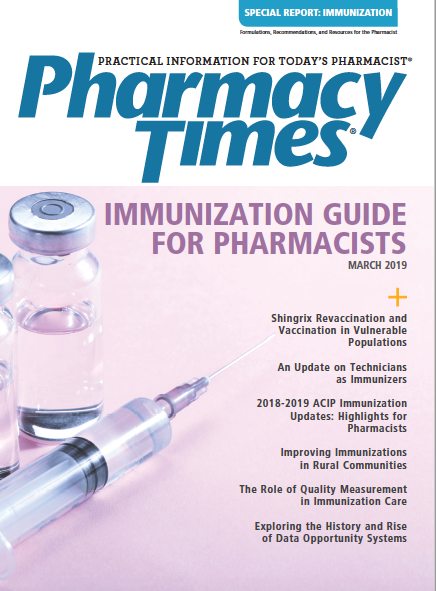Publication
Article
Supplements
Strategies for Providing Immunizations in Rural Communities
Author(s):
Living in a rural community brings many different challenges relating to health care. There may be obstacles to overcome that patients in urban areas do not have to manage, which could cause access to adequate health care to be a struggle for some. Patients may live in areas that do not have enough health care providers per capita to serve the population. In addition, many patients who live in rural areas do not seek out health care because of transportation difficulties, living too far from providers to make regular visits, the inability to pay for services, or a lack of health-related education.1
Although access to physicians may be difficult, retail pharmacies—because of their relatively close proximity to many rural dwellings and their longer hours of operation—may be better suited to meeting these patients’ needs. Pharmacists can be a key point of contact for patients who live in rural areas. One specific area in which pharmacists can make a huge impact is education about immunizations, and subsequently providing them. Here are some strategies that pharmacists who work in rural communities can use to help protect their patients via immunization.
Have a Sense of Urgency
Pharmacists in rural communities should make a point of asking patients about their immunization status each time they visit the pharmacy. Pharmacy technicians should have a good knowledge about the adult immunization schedule and what kind of questions to ask to ensure that patients are aware of all recommended immunizations that are available to them. As possible needs are identified, the patient can be referred to the pharmacist, who can then answer any questions and make final determinations on appropriate immunizations. It is imperative that the pharmacist offers to provide the recommended immunizations at the time of consultation with the patient. Patients who do not live close to the store or do not have adequate transportation may not come in very often. If they leave the store without receiving a recommended immunization, it may be difficult to get them to return, and an opportunity to protect them and the community may be missed. Pharmacy staff must keep an adequate supply of vaccines on hand so that same-day immunizations can be provided.
Use Social Media
Pharmacists who work in rural settings often live there as well. Residents in these communities may be physically spread throughout the area but they frequently have some kind of online gathering place where they discuss issues pertinent to their community. An astute pharmacist can find out where the patients interact socially online and become a member of that group, or create an account for their pharmacy. The pharmacist can then use the platform to share articles about immunizations or other health care—related topics. Seasonal posts can remind patients to seek flu shots, and the pharmacy can update the community on the availability of immunizations that might be in short supply.
Community message boards or online groups can also be a great place for patients to ask questions and receive good advice without ever having to leave their homes. Pharmacists who are adept at using social media can gain a real advantage for their store while simultaneously providing a valuable service to the community. Once a pharmacist gains the trust of the community, they can become the go-to person in the area for questions about health care—related topics.
Go Where the Patients Are
Some patients who live in rural communities have trouble traveling to the pharmacy for various reasons. Pharmacists seeking to expand their reach and help more patients in the community may find that they need to leave the pharmacy to accomplish this goal. The pharmacist can attempt to identify when and where there might be large gatherings within the community, such as an annual festival that attracts a lot of people, or a flea market gathering that takes place on a recurring basis. For events like these, the pharmacy can register for a booth or ask to be provided with one. During the event, the pharmacist can provide free information and offer to immunize patients on-site. Fall events would provide an opportune time to administer influenza vaccines because of the universal need for all patients during that time and the predictability of insurance coverage for the flu shot. Being a regular attendee or exhibitor at community events can greatly enhance the relationship between the pharmacy and the community, leading to a boost in sales.
Those who seek out opportunities to network with their patients will be much more successful than those who only serve the patients who come into the store. Providing immunizations in a rural setting can be more challenging than in an urban area where patients are mobile and always close by. Pharmacists can be a key part in keeping their rural communities healthy and free from vaccine-preventable disease. Community outreach also can help a pharmacy develop a reputation as the most popular, most caring, and most successful pharmacy in the area. This kind of status will lead to better job stability for the staff, more profits for the owner, and a generally healthier population due to the efforts of the community pharmacist.
Brady Cole, RPH is pharmacy manager at Tom Thumb Pharmacy in Plano, Texas, and an active preceptor at Texas Tech University and the University of Houston. He is also founder of the website Helpful Pharmacist, helpfulpharmacist.com.
Reference
About rural health care. National Rural Health Association website. ruralhealthweb.org/about-nrha/about-rural-health-care. Accessed January 30, 2019.







